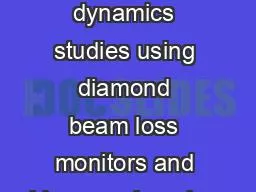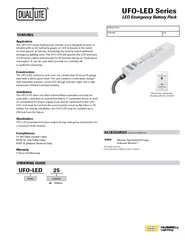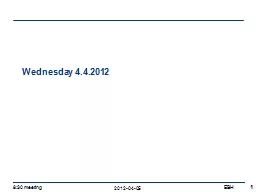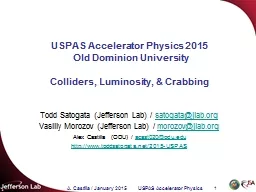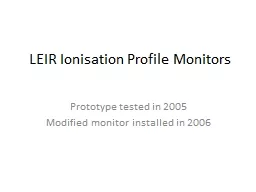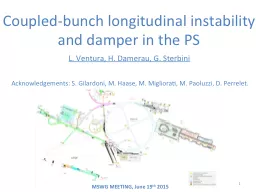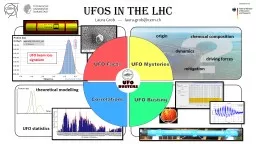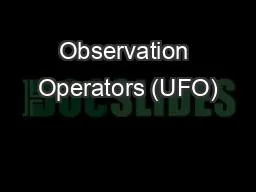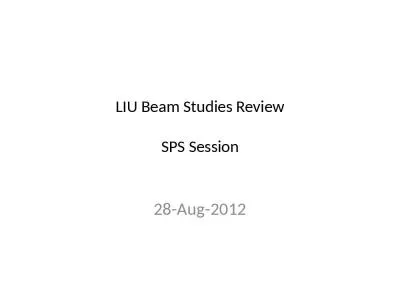PPT-UFO type 1 dynamics studies using diamond beam loss monitors and blown-up bunches
Author : nephewhers | Published Date : 2020-07-01
M Väänänen B Lindström D Wollmann P Belanger CERN Technical meeting 25 April 2019 UFO observations in the LHC LHC first proton accelerator to suffer from
Presentation Embed Code
Download Presentation
Download Presentation The PPT/PDF document "UFO type 1 dynamics studies using diamon..." is the property of its rightful owner. Permission is granted to download and print the materials on this website for personal, non-commercial use only, and to display it on your personal computer provided you do not modify the materials and that you retain all copyright notices contained in the materials. By downloading content from our website, you accept the terms of this agreement.
UFO type 1 dynamics studies using diamond beam loss monitors and blown-up bunches: Transcript
Download Rules Of Document
"UFO type 1 dynamics studies using diamond beam loss monitors and blown-up bunches"The content belongs to its owner. You may download and print it for personal use, without modification, and keep all copyright notices. By downloading, you agree to these terms.
Related Documents

